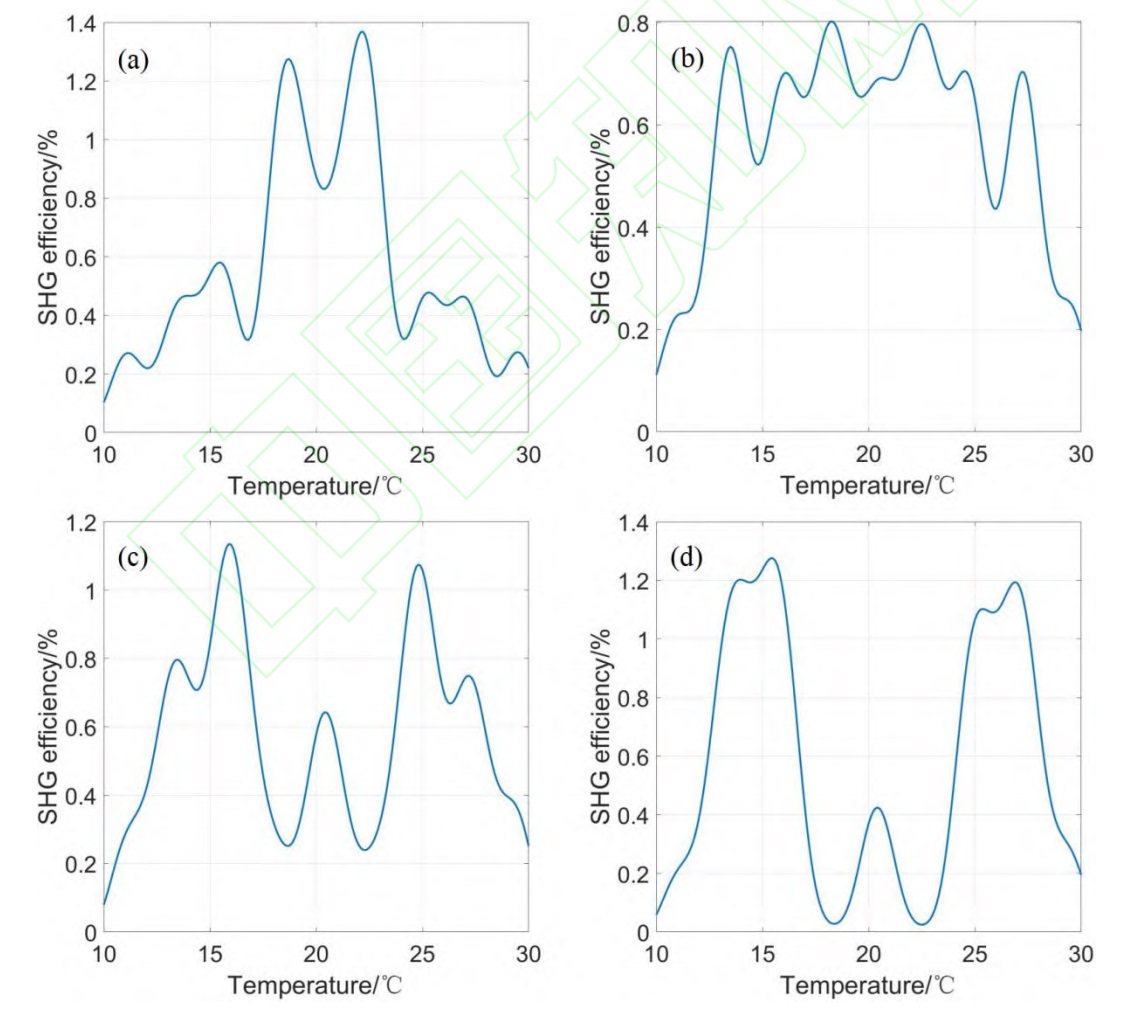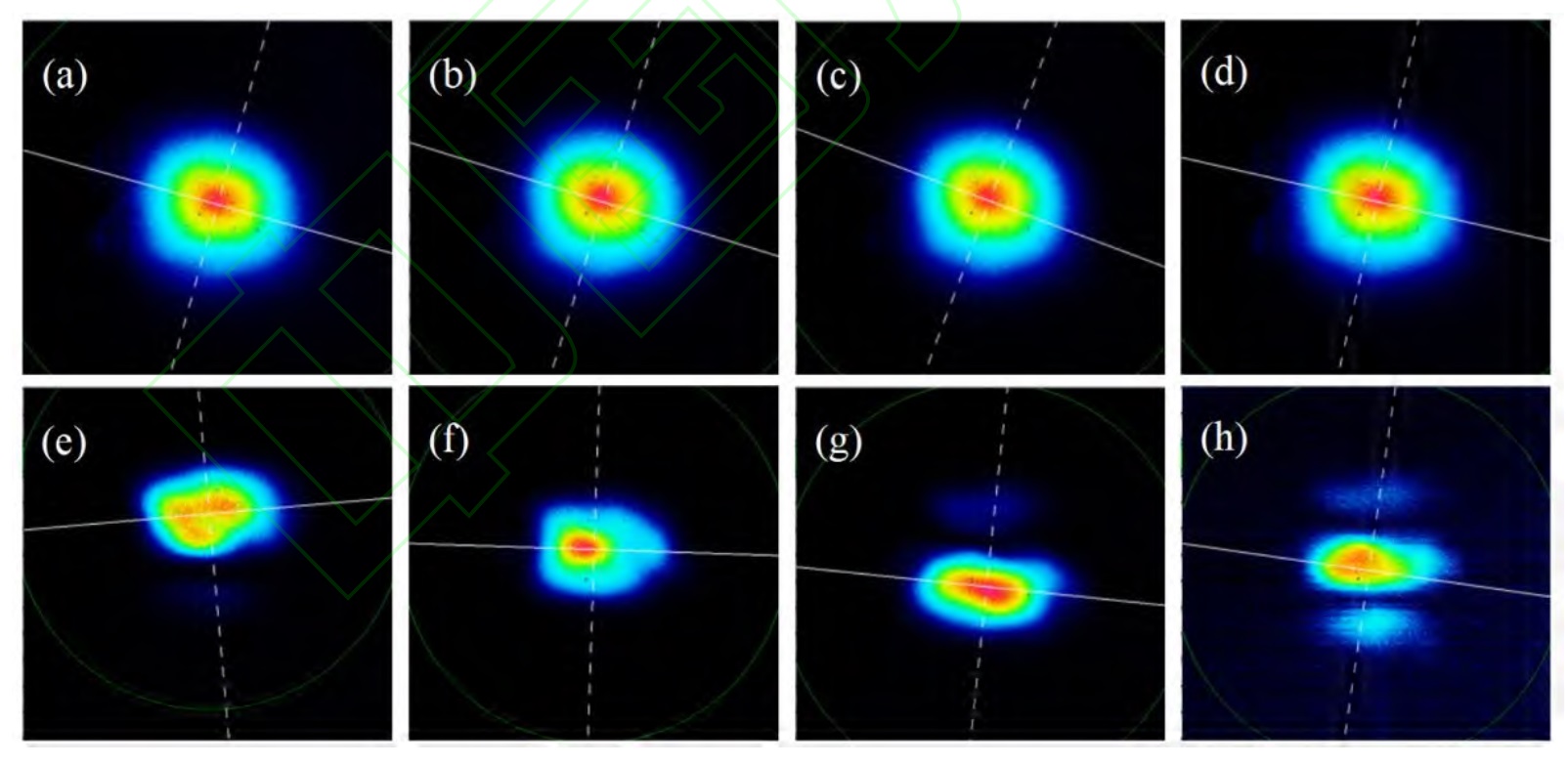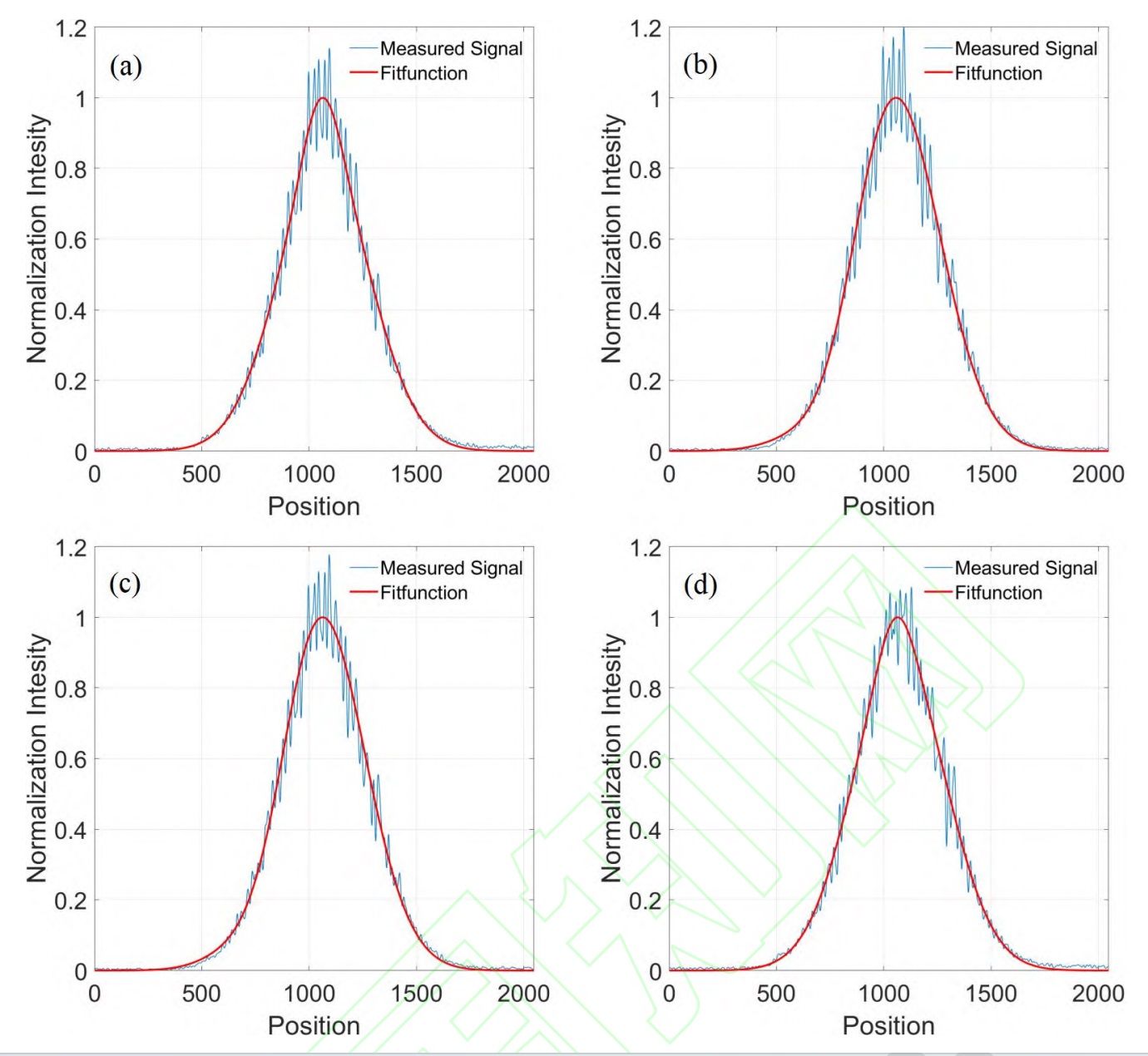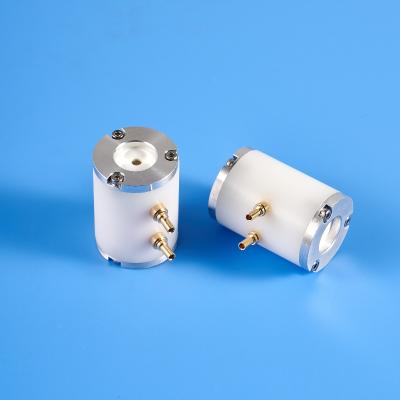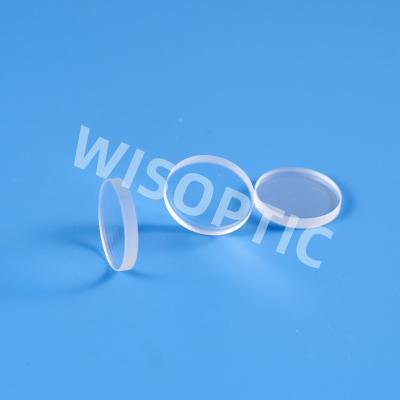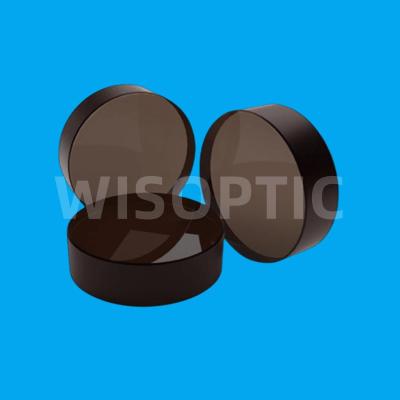Study on the efficiency and temperature robustness of chirped PPLN crystal in 1064nm frequency doubling experiment - 07
4. Experimental Result and Analysis
4.2 Temperature robustness comparison between CPPLN and LBO
As a relatively new nonlinear optical material, CPPLN has a high nonlinear coefficient and a large gain bandwidth. In the foreseeable future, it will have more applications in the fields of industry and medicine. With the increasing demand for polarized crystal materials such as PPLN and CPPLN, the electric field polarization technology of crystals will also have further breakthroughs, and the processing accuracy of polarized crystals will continue to improve. When the processing accuracy reaches a level below 1nm, the error of the polarization period will also be reduced to less than 0.01%, the structure of the produced CPPLN crystal will be closer to the designed CPPLN structure, and the obtained frequency doubling effect will also be closer to the designed effect. Therefore, the practicality of CPPLN will continue to improve in the future with the continuous development of electric field polarization technology.
Fig 6. The relationship between temperature and SHG efficiency of CPPLN with different duty cycles. (a )49.60%; (b) 49.61%; (c) 49.62%; (d) 49.63%
The spot comparison of the green laser produced by the two crystals is shown in Figure 7. In Figure 7, (a) to (d) are the spots of the doubled frequency light produced by CPPLN, corresponding to 21℃, 25℃, 29℃, and 33℃, respectively, and (e) to (h) are the spots of the doubled frequency light produced by LBO, corresponding to 15℃, 19℃, 23℃, and 27℃, respectively. The spot image of CPPLN is processed by MATLAB, and the result is shown in Figure 8. It can be seen from Figure 7 (a) to (d) and Figure 8 that the spot of CPPLN is a standard Gaussian distribution, and the change of temperature has almost no effect on the shape of the spot. The standard Gaussian spot shape is maintained in the range of 21 to 33℃. From (e) to (h) of Figure 7, it can be seen that temperature has a significant effect on LBO. Under the condition of 19℃, which achieves the highest frequency doubling conversion efficiency, the high-energy part in the middle of the spot is close to a circle. When the temperature changes, the spot will show an elliptical change with the change of temperature. At 15℃ and 23℃, the spot has split, with one bright and one dark spot. When the temperature changes to 33℃, the spot even splits into three spots. The reason why the spot is elliptical is that LBO uses temperature phase matching and the frequency doubling crystal is long. When the 532nm laser passes through LBO, it will produce a large walk-off effect. CPPLN uses quasi-phase matching. The fundamental frequency light and the frequency doubling light propagate in the same direction, and there is no walk-off effect. The reason for the LBO spot splitting is that when processing the crystal, there may be a certain error between the two crystal axes and the designed crystal axis direction, which causes the matched fundamental frequency light to not be horizontally polarized as desired in the design. When the temperature deviates from the matching temperature, the walk-off effect causes the horizontal polarization light, vertical polarization light and double frequency light of the fundamental frequency light to separate. The CPPLN made by the electric field polarization method can ensure that the best double frequency effect is obtained when the fundamental frequency light is horizontally polarized, avoiding the problem of spot splitting.
Fig 7. Comparison of the output spot of CPPLN and LBO SHG experiments. (a)(b)(c)(d) The output spot of
CPPLN at 21℃, 25℃, 29℃, and 33℃, respectively; (e)(f)(g)(h) The output spot of LBO under conditions of 15℃, 19℃, 23℃, and 27℃, respectively
Fig 8. CPPLN output spot intensity distribution fitting curve. (a) 21℃; (b) 25℃; (c) 29℃; (d) 33℃
5. Conclusion
In order to improve the generation efficiency and stability of 532nm, this paper introduces CPPLN crystal as a nonlinear material for frequency doubling, designs its structure, studies the 1064nm frequency doubling performance of the designed CPPLN crystal theoretically and experimentally, and compares it with the most commonly used frequency doubling crystal LBO. The designed and manufactured CPPLN can obtain the highest frequency doubling conversion efficiency under 25℃. Under the condition of 22.53W input 1064nm continuous light, 148mW of 532nm light can be obtained. The light-to-light conversion efficiency is about 0.66%, which is 15.58 times that of LBO. The half-width of the frequency doubling light power generated by CPPLN with respect to temperature can reach 8.40℃, which is greater than LBO. However, due to the processing accuracy, when the temperature changes, the power of CPPLN will continue to oscillate with the temperature change. The output frequency doubling spot is a standard Gaussian spot, which is almost unaffected by temperature changes. Although the temperature robustness expected in the design cannot be fully achieved due to the processing accuracy, it is believed that with the improvement of the polarized crystal production process in the future, CPPLN crystals that are closer to the design structure will be obtained, which can effectively improve the laser output power and stability of 532nm solid-state continuous lasers, and have broad application prospects in the fields of titanium sapphire femtosecond lasers, narrow linewidth lasers, low-noise lasers, etc. At the same time, it is also hoped that it can provide references for other wavelength lasers in terms of means to improve power and temperature robustness.

